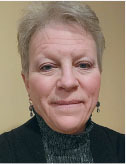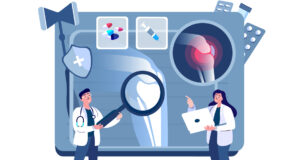
Workers’ Compensation Case Management: Demonstrating Outcomes and Achieving Goals
Determining outcomes in workers’ compensation case management comes down to knowing the rules in your state, the organization you work for and the needs of the injured worker. In this article two seasoned workers’ compensation case managers talk about how you can demonstrate the outcomes and achieve goals in this dynamic area of case management.
Maryann Ott, RN, BSN, CCM, CPC, shares insights into the regulatory side of workers’ compensation. She discusses the intricacies of the system and how case managers, by learning the rules in the state where they work and collaborating with the claims adjustor, can achieve positive outcomes while meeting the injured workers goal.
Whether you’re an experienced case manager or new to the profession, administration of workers’ compensation is not often taught or understood by medical professionals. When an injured worker becomes your patient, would you know how to maneuver through the system to achieve the best injury or illness outcome(s)?
Once a work-related injury or illness occurs, returning the injured worker back to work (if possible) can be a challenge. Workers’ compensation is a government-mandated program that provides benefits to someone injured or who becomes ill while at work or from the result of the job. The injured worker becomes part of a state legal system where they are either in a state-funded or self-insured covered program. These programs vary by state. The administrative difference is based on an employers’ choice to choose between covering the medical costs through their own insurance choice or paying into a state-funded insurance group. The latter has managed care organizations (MCOs) to handle the injury claim. Both systems have a variety of case managers to assist in medically managing the injured worker to an optimal recovery for returning them back to work (when possible).
Many times, it’s a series of hurdles to achieve the medically desired outcome(s) for a variety of reasons. While both systems grant approval of care in emergency situations, non-urgent injury treatment approvals can be delayed by a state’s workers’ compensation laws and rules. A self-insured employer tries to keep their insurance costs down; thus, treatment and testing modalities can get denied. The injured worker must then appeal the decision and hire legal counsel or represent themself. Time delays occur as the injured worker and employer attend workers’ compensation hearings. Based on individual state laws or rules, there can be several levels of hearings, which prevents getting timely medical care. The alternative is for the injured worker to self-pay and wait for the hearing outcome. This can be a costly choice.
In comparison, to the self-insured employer, an employer within a state-funded insurance program utilizes their MCO to medically manage the injured worker. Many state programs have pre-approved physicians and other care team entities, along with medical facilities that are contracted to care for an injured worker. The MCO will manage the prescribed care using these approved individuals and facilities. Additionally, the MCO handles the financial payments for such care.
Each injured worker is assigned an MCO, based on their employer’s choice. The injured worker’s healthcare team members and medical facilities submit treatment and medical care requests to the MCO. The MCO-assigned case manager reviews and makes the approval or denial for all requests. Since employers pay into the state workers’ compensation fund, they too can deny the injured workers’ claim or any of the treatment modalities. When this occurs, the claim will be sent for hearing at an independent state agency, i.e., industrial commission. At times the hearing officer can be a medical doctor and an attorney. This is most helpful, as they understand the mechanism of injury and what is medically necessary and appropriate to achieve the best medical outcome. While they generally rule in favor of the injured worker, there can be employer or MCO denials for specific treatment care. As addressed previously, the same hearing process applies, and thus the best medical care outcomes become delayed. To learn more about your state rules and regulations in the states where you work as a workers’ compensation case manager, talk to you direct report or the claims adjustor.
Anne Llewellyn, MS, BHSA, RN, CCM, CRRN, CMGT-BC, BCPA, CM Fellow, is a catastrophic case manager working in Florida.
Anne has worked for several large case management companies who handle cases for large employers to assist injured workers with medical management. As an independent case manager, Anne is responsible for working with the injured worker and all the stakeholders to set goals and report outcomes to justify her role in the case. Her team includes the injured worker and their family, the claims adjustor, the employer and the healthcare team involved in the claim.
Here are some of the goals that she strives to achieve:
- Working closely with the claims adjustor, who is responsible for ensuring that the rules and laws in the state of Florida are followed on each file. The claims adjustor is responsible for overseeing the case progression. The claims adjustor has timelines and rules to follow, so my work directly impacts the adjustors’ ability to meet their timelines. If I do not stay on top of things, they can be penalized for not meeting their timelines, so working together is key. I do this by keeping the adjustor up to date on the case, the plan of care and presenting request for approval for treatments, diagnostic testing and any orders treating physician’s request. Through my involvement, I take the time to explain to the adjustor why the orders are needed and how they help the physician to better manage/treat the injured worker. Once approved I would have to find a provider/vendor to provide the service. Staying within the workers’ comp network helps to contain costs. All this leads to helping the injured worker to meet their needs so they can return to gainful employment.
- My goal is to help coordinate care and ensure doctors’ orders are implemented without delay. I help to improve communication between providers, the injured worker and the employer. I work with the team to discuss a safe return to work on every visit. I work with the employer to see if there is a job the worker can do that would be within their restrictions. If so, we let the doctor know so return to work restrictions can be given. The goal is to ensure appropriate medical care to help the injured worker address the work injury or illness so the injured worker could return to gainful employment.There are evidence-based guidelines in place that helped guide care. By keeping in touch with all stakeholders, care is coordinated, and all are aware of what each other is doing. Keeping the injured worker updated and getting his/her input is important. Doing so helps them be engaged in their care and a part of the team. This engagement gives them back control so they have a vested interest to comply with the plan of care and return to work, when they are able.
- Through proactive case management, I look for triggers early on that can cause setbacks and even derail the case. Proactive case management includes working with the team to know how the patient is doing and to address problems and issues so they can be resolved before setbacks occur.
- Avoidance of attorney involvement in the workers’ compensation case. Estimates are that unnecessary attorney involvement raises the cost of the case by 40%, so avoiding attorney involvement is important. I do this through close communication and proactive case management with the injured worker to set realistic expectations and address issues that would upset them. Recognizing reasons an injured worker might be driven to retain an attorney and addressing those reasons early on can help the claim stay on track and avoid attorney involvement. Motivators for Attorney Involvement:
- No contact by employer or insurer
- Overbearing or intrusive contact by the employer
- Lawyer advertising/solicitation
- Unpaid bill, prescriptions unreimbursed or their reimbursement check is late
- Lack of modified duty work/employer harassment after return to work
- Worker/employer dissatisfaction
- Loss of health insurance or other benefits
- The accident that never should have happened
- Extended lost time by the injured worker
Case managers who are actively involved with the injured worker, the claims adjustor, the employer and providers can ward off these issues and claim them as outcomes that would have occurred if the case manager was not involved. Putting dollar amounts to each of these points allows you to show your value on a file. Soft savings like patient and provider satisfaction are also important and will help you get more files as you are an asset to the process.
Case management is an important tool in the workers’ compensation industry. Being able to show the value we bring to the injured worker, their family, the employer and other key stakeholders requires continuing education, communication and negotiation skills and clinical knowledge. Showing your outcomes allows you to highlight your abilities.
IMAGE CREDIT: RAWPIXEL.COM/SHUTTERSTOCK.COM






